Bash Check If Var Is Empty
—
### Defining variables in Bash
Before diving into checking for empty variables, it is important to understand how to define variables in Bash. To declare a variable, you simply assign a value to it using the following syntax:
“`
variable_name=value
“`
For instance, to assign the value “Hello, world!” to a variable named `greeting`, you would write:
“`
greeting=”Hello, world!”
“`
Variables in Bash are case-sensitive, which means `greeting` and `Greeting` are two distinct variables.
—
### Understanding empty variables in Bash
An empty variable in Bash refers to a variable that does not contain any characters. It is different from a null variable, which is a variable that has been unset or has no value assigned to it.
Differentiating between these two scenarios is crucial. While an empty variable has no characters, you can still perform operations on it. On the other hand, if a variable is null or unset, it may cause errors or produce unexpected results if used without appropriate checks.
—
### Methods to check if a variable is empty in Bash
Bash provides several methods to check if a variable is empty. Let’s explore the commonly used techniques:
1. Using the `-z` operator: In Bash, you can utilize the `-z` operator to check if a variable is empty. It returns true if the variable is empty and false otherwise.
“`bash
if [ -z “$variable” ]; then
echo “Variable is empty”
fi
“`
This technique is particularly useful in conditional statements, where you can execute different commands based on the emptiness of a variable.
2. Employing the `-n` operator: Conversely, you can use the `-n` operator to determine if a variable is not empty. It returns true if the variable contains one or more characters, and false otherwise.
“`bash
if [ -n “$variable” ]; then
echo “Variable is not empty”
fi
“`
By using this operator, you can execute specific commands when the variable is not empty.
3. Example of using if statements to check if a variable is empty: You can use if statements in combination with various operators to perform complex checks on variables. For example:
“`bash
if [[ “${variable}” == “” ]]; then
echo “Variable is empty”
fi
“`
Note the use of double brackets `[[` and `]]` for string comparison. This approach allows for additional flexibility and more versatile conditions.
—
### Handling whitespace in variables when checking for emptiness
When working with variables in Bash, whitespace plays an important role. It is crucial to consider how Bash interprets whitespace when checking for emptiness.
When variables contain leading or trailing whitespace characters, Bash includes them as part of the variable’s content. As a result, a variable with whitespace is not considered empty.
To handle and remove whitespace when evaluating emptiness, you can utilize the `trim` command. This command trims leading and trailing whitespace characters from a string.
“`bash
trimmed_variable=$(echo -e “${variable}” | tr -d ‘[:space:]’)
“`
By using this technique, you can ensure that whitespace does not affect your evaluations of variable emptiness.
—
### Checking for both empty and unset variables in Bash
As mentioned earlier, it is crucial to differentiate between empty and unset variables in Bash.
An empty variable has been declared but does not contain any characters. Conversely, an unset variable has not been declared or has been explicitly unset using the `unset` command.
To check for both empty and unset variables, you can use conditional statements. Here’s an example:
“`bash
if [ -z “${variable}” ]; then
echo “Variable is empty or unset”
fi
“`
By using this approach, you can handle scenarios where a variable has not been assigned a value or has been explicitly unset, ensuring your scripts are robust and error-free.
—
### Dealing with variables containing special characters
In Bash, variables can contain special characters such as spaces, quotation marks, or backslashes. However, handling and checking the emptiness of variables with special characters can be challenging.
To ensure the proper evaluation of such variables, you can place the variable within double quotation marks when checking for emptiness. This ensures that special characters are correctly interpreted and do not lead to unexpected results.
“`bash
if [ -z “${variable}” ]; then
echo “Variable is empty”
fi
“`
By using double quotation marks, you can avoid issues caused by special characters and accurately determine if the variable is empty.
—
### Practical examples and use cases
Now that we have explored various methods to check for empty variables, let’s delve into some practical examples and use cases:
1. Scenario: Check empty shell script:
– Use the `-z` operator to validate if a variable in a shell script is empty.
– Perform specific actions based on the emptiness of the variable, such as displaying an error message or executing an alternative command.
2. Scenario: If var bash:
– Check if a variable in a Bash script is empty or contains a value.
– Use if statements and conditional operators to handle different outcomes, ensuring proper execution of subsequent commands.
3. Scenario: Check NULL shell script:
– Verify if a variable in a shell script has been explicitly unset or is undefined.
– Apply appropriate checks to prevent errors and ensure the expected behavior of the script.
4. Scenario: Bash set variable null:
– Set a variable explicitly to null using the `unset` command.
– Utilize conditional statements to handle such variables in the script, avoiding unexpected behaviors.
5. Scenario: Exit bash terminal:
– Check if a variable conditionally determines whether to exit the Bash terminal.
– Use conditional statements and appropriate checks to ensure a controlled exit from the terminal.
6. Scenario: String is null or empty bash:
– Validate if a string variable is either null or empty in a Bash script.
– Perform specific actions based on the emptiness of the string, such as assigning a default value or displaying a message.
7. Scenario: Bash if else:
– Implement conditional statements using if-else constructs in Bash to handle variables’ emptiness.
– Execute different commands based on the evaluation of the variable’s contents.
8. Scenario: If else bash one linebash check if var is empty:
– Optimize the script by writing if-else statements in a single line, focusing on the check for variable emptiness.
– Increase script performance and maintainability by condensing multiple lines into a concise format.
By understanding the concepts and techniques discussed in this article, you will be well-equipped to handle and check the emptiness of variables in Bash scripts effectively.
—
### FAQs
1. Q: How can I assign a default value to an empty variable in Bash?
– A: You can use the `${variable:-default}` syntax to assign a default value to a variable if it is empty. For example, `result=”${variable:-No value assigned}”` sets the variable `result` to “No value assigned” if `variable` is empty.
2. Q: Can I check for the emptiness of multiple variables in a single conditional statement?
– A: Yes, you can use logical operators such as `&&` and `||` to perform complex evaluations involving multiple variables. For example, `if [ -z “${var1}” ] && [ -z “${var2}” ]; then echo “Both variables are empty”; fi` checks if both `var1` and `var2` are empty.
3. Q: How can I check if a variable is empty in a shell script without using the `-z` or `-n` operators?
– A: You can use string length comparisons to achieve this. For instance, `if [ “${#variable}” -eq 0 ]; then echo “Variable is empty”; fi` checks if the length of `variable` is zero, indicating emptiness.
4. Q: What is the difference between double quotation marks and single quotation marks when handling variables with special characters?
– A: Double quotation marks preserve certain special characters within the variable and allow variable expansion. Single quotation marks treat almost all characters literally, including the dollar sign, backticks, and backslashes.
The techniques and advice provided in this article should be helpful in checking for empty variables in Bash and ensuring the reliability and accuracy of your scripts. Remember to consider the specific requirements and constraints of your scripts and adjust the methods accordingly.
Check If A Variable Is Set/Empty In Bash
How To Check If Var Is Empty In Bash?
Bash, which stands for Bourne Again SHell, is a popular command-line interface and scripting language used in Unix-based operating systems. It offers a wide range of powerful features and functionalities, making it a versatile tool for automating tasks and managing system operations.
When working with variables in a bash script, it is often essential to check if a variable is empty. This can help in validating user input, handling error conditions, or controlling program flow. In this article, we will explore different methods to determine whether a variable is empty or not in bash.
Method 1: Using the -z Flag
The simplest way to check if a variable is empty in bash is by using the -z flag along with the variable name. The -z flag returns true if the length of the variable is zero, indicating that the variable is empty. Here’s a sample code snippet demonstrating this method:
“`
if [ -z “$var” ]; then
echo “Variable is empty.”
else
echo “Variable is not empty.”
fi
“`
In the above example, the script checks whether the variable “$var” is empty. If it is, the script prints “Variable is empty.” Otherwise, it prints “Variable is not empty.”
Method 2: Using the -n Flag
The inverse of the -z flag is the -n flag. It returns true if the length of the variable is non-zero, indicating that the variable is not empty. Here’s an example code snippet illustrating this method:
“`
if [ -n “$var” ]; then
echo “Variable is not empty.”
else
echo “Variable is empty.”
fi
“`
In this method, the script checks whether the variable “$var” is not empty. If it is not empty, it prints “Variable is not empty.” Otherwise, it prints “Variable is empty.”
Method 3: Using Conditional Check
Another way to check if a variable is empty is by utilizing a conditional check with the double brackets [[ ]]. Here’s an example:
“`
if [[ -z $var ]]; then
echo “Variable is empty.”
else
echo “Variable is not empty.”
fi
“`
This method follows a similar pattern to the previous ones, with the script checking if the variable “$var” is empty. If it is, “Variable is empty” is printed; otherwise, “Variable is not empty” is printed.
Method 4: Using Double Quotes
Using double quotes around the variable can also be utilized to check if it is empty. Here’s a code snippet illustrating this method:
“`
if [ “$var” = “” ]; then
echo “Variable is empty.”
else
echo “Variable is not empty.”
fi
“`
In this approach, the script checks if the variable “$var” is equal to an empty string. If it is, “Variable is empty” is printed; otherwise, “Variable is not empty” is printed.
FAQs:
Q: Can I use the -n flag to check if a string is empty as well?
A: Yes, the -n flag can be used to check if a string is empty or not. For instance, you can use it like this: `[ -n “$string” ]`.
Q: What if I want to check if a variable is not empty and not null as well?
A: To check if a variable is not empty and not null, you can combine the -n flag with the -z flag using the logical OR operator. Here’s an example: `[ -n “${var}” ] || [ -z “${var}” ]`.
Q: Is there any performance difference between these methods?
A: The performance difference between these methods is negligible. You can choose the method that suits your coding style and requirements.
Q: Can I use these methods to check if an array is empty?
A: Yes, these methods work for both regular variables as well as arrays in bash.
Q: What if I want to exit the script if a variable is empty?
A: You can combine the -z flag with the `exit` command to exit the script if a variable is empty. Here’s an example: `if [ -z “$var” ]; then exit 1; fi`.
In conclusion, checking if a variable is empty is a fundamental aspect of bash scripting. By leveraging the various methods discussed in this article, you can validate user input, handle error conditions, and control program flow effectively. Choose the method that aligns with your coding style and project requirements, and leverage the power of bash scripting to its fullest potential.
What Is The If Condition To Check If A Variable Is Empty?
In programming, it is often necessary to check whether a variable holds any value or is empty. This condition can be crucial in determining how a program should proceed based on whether a variable has been defined or does not contain any data. In this article, we will explore various ways to check if a variable is empty using the if condition, along with common FAQs related to this topic.
Understanding the concept of an empty variable:
Before delving into the if condition for checking if a variable is empty, it is important to grasp the concept of an empty variable. In most programming languages, an empty variable typically refers to a variable that has not been assigned a value or holds no data. An empty variable is different from one that holds a null or zero value. A null or zero value implies the variable has been explicitly set to a specific state, while an empty variable implies it has not been populated at all.
The if condition to check if a variable is empty:
The if condition is a fundamental construct in programming that allows executing specific code blocks based on certain conditions. To check if a variable is empty, developers often employ comparisons or built-in functions within the if condition. The exact syntax may differ slightly depending on the programming language being used, but the underlying principle remains similar.
Let’s discuss a few common approaches to checking if a variable is empty using the if condition:
1. Comparison with an empty string:
In many programming languages, an empty string (“”) represents a variable with no characters. By comparing a variable to an empty string within the if condition, we can determine if the variable is empty. For example, in Python:
“`python
if variable == “”:
# Code block for an empty variable
else:
# Code block for a non-empty variable
“`
2. Comparison with null or undefined:
Some programming languages use null or undefined to indicate an empty variable. By checking if the variable equals null or undefined, we can ascertain its emptiness. For instance, in JavaScript:
“`javascript
if (variable === null || typeof variable === “undefined”) {
// Code block for an empty variable
} else {
// Code block for a non-empty variable
}
“`
3. Using a built-in function:
Several programming languages provide built-in functions specifically designed to check if a variable is empty. These functions often return a boolean value indicating the emptiness of a variable. For instance, in PHP:
“`php
if (empty($variable)) {
// Code block for an empty variable
} else {
// Code block for a non-empty variable
}
“`
Here, the empty() function in PHP dynamically determines if a variable is empty or not by evaluating various conditions. It considers variables as empty if they are set to false, zero, an empty string, null, undefined, or an array with no elements.
Frequently Asked Questions (FAQs):
Q1. Can I use the negation of the if condition to check if a variable is not empty?
A1. Yes, you can use the logical negation operator (!) to check if a variable is not empty. For example, using the empty function in PHP:
“`php
if (!empty($variable)) {
// Code block for a non-empty variable
} else {
// Code block for an empty variable
}
“`
Q2. What if a variable contains only whitespace characters? Will it be considered empty?
A2. This depends on the programming language and its implementation of emptiness. In some languages, leading and trailing whitespace characters are considered part of a non-empty string, while in others, they are not. It is best to refer to the documentation of the specific programming language you are working with to determine its behavior.
Q3. Are there any performance considerations while checking for an empty variable?
A3. The performance impact is typically negligible when checking if a variable is empty, as it involves basic comparison operations or function calls. However, using built-in functions like empty(), which evaluate multiple conditions, may introduce a slightly higher overhead than direct comparisons.
In conclusion, checking if a variable is empty is a common requirement in programming. By utilizing the if condition and employing comparisons or built-in functions, developers can effectively determine the emptiness of a variable and control the flow of their programs accordingly.
Keywords searched by users: bash check if var is empty Check empty shell script, If var bash, Check NULL shell script, Bash set variable null, Exit bash terminal, String is null or empty bash, Bash if else, If else bash one line
Categories: Top 84 Bash Check If Var Is Empty
See more here: nhanvietluanvan.com
Check Empty Shell Script
In the ever-evolving world of programming and scripting, shell scripts play a crucial role in automating tasks and simplifying complex operations. However, as scripts become more extensive and intricate, it becomes increasingly vital to ensure their correctness and efficiency. One common concern that arises during script development is how to check if a shell script is empty. In this article, we will delve into this topic, exploring various techniques and providing practical solutions to address this issue.
What is an Empty Shell Script?
Before we proceed, let’s define what we mean by an empty shell script. Simply put, an empty shell script refers to a script file that does not contain any commands or code. This can occur due to accidental deletions, shortcomings during script creation, or even when starting from a blank template.
Methods to Check Empty Shell Script
There are several approaches you can take to determine if a shell script is empty. Let’s explore the most commonly used methods:
1. File Size Check:
One straightforward way to check if a script file is empty is by examining its size. An empty script file will have a size of 0 bytes. You can verify this by running the following command:
“`bash
if [ -s “$file” ]; then
echo “Script file is empty.”
else
echo “Script file is not empty.”
fi
“`
2. Word Count Check:
Another method to detect an empty shell script is by counting the number of words in the file. An empty script file will have zero words. Here’s how you can achieve this:
“`bash
if [ `wc -w < "$file"` -eq 0 ]; then
echo "Script file is empty."
else
echo "Script file is not empty."
fi
```
3. File Content Check:
To perform a more thorough check, you can examine the file content to ensure it is empty. One way to accomplish this is by reading the first line of the script file and checking if it is empty. Here's a sample script that follows this approach:
```bash
if [[ ! -s "$file" || -z $(head -n 1 "$file") ]]; then
echo "Script file is empty."
else
echo "Script file is not empty."
fi
```
Frequently Asked Questions (FAQs)
Q1. Why is it important to check if a shell script is empty?
A1. Checking if a shell script is empty allows you to identify potential errors or accidental deletions during the script creation process. It ensures that you do not execute an incomplete or non-functional script.
Q2. How can I prevent accidentally creating an empty shell script?
A2. To prevent accidentally creating an empty shell script, you can use a template with some initial code structure or add comments that outline the script's purpose. Additionally, practicing good version control and backup habits reduces the likelihood of permanently losing your script.
Q3. Can I use these methods to check if a script file is empty in any programming language?
A3. The methods described in this article are specific to shell scripts. However, you can adapt the concepts to other programming languages by making appropriate modifications to the commands and syntax.
Q4. Are there any risks associated with executing an empty shell script?
A4. While executing an empty shell script may not cause immediate harm, it can lead to unexpected behaviors or errors if the script relies on non-existent commands or variables. Therefore, it is always advisable to confirm whether a script is empty before execution.
Q5. Can I automate the shell script empty check?
A5. Yes, you can automate the script empty check by integrating the check into a larger script or creating a separate script specifically designed to verify the emptiness of other scripts.
Conclusion
Checking whether a shell script is empty is a fundamental step to ensure the reliability and proper functioning of your code. By employing methods such as analyzing file size, word count, or file content, you can quickly identify any potential issues before executing your script. Remember to adopt best practices and consider automating the check to streamline your development process.
If Var Bash
The ‘if’ statement in bash is primarily used for conditional execution of commands. It allows you to specify a condition, and if that condition evaluates to true, the associated commands are executed; otherwise, they are skipped. The general syntax of the ‘if’ statement in bash is as follows:
“`
if [ condition ]
then
# commands to execute if condition is true
else
# commands to execute if condition is false
fi
“`
Here, the condition inside the square brackets is a logical expression that can be a comparison, file or string check, or even an evaluation of variables. Remember to include spaces before and after the square brackets for proper syntax.
To better understand this, let’s consider an example. Suppose we want to check if a number is positive or negative. We can accomplish this as follows:
“`
#!/bin/bash
echo “Enter a number:”
read num
if [ $num -gt 0 ]
then
echo “The number is positive.”
else
echo “The number is negative or zero.”
fi
“`
In this script, the user is prompted to enter a number, which is read into the ‘num’ variable. The ‘if’ statement then checks if the number is greater than zero using the ‘-gt’ operator. If the condition is true, the message “The number is positive” is displayed; otherwise, the message “The number is negative or zero” is printed.
The ‘if’ statement can also be combined with additional conditional statements such as ‘elif’ (else if). This allows you to check multiple conditions sequentially. Take a look at this example:
“`
#!/bin/bash
echo “Enter your age:”
read age
if [ $age -lt 18 ]
then
echo “You are underage.”
elif [ $age -ge 18 ] && [ $age -lt 65 ]
then
echo “You are an adult.”
else
echo “You are a senior citizen.”
fi
“`
In this script, the user’s age is read into the ‘age’ variable. The ‘if’ statement checks if the age is less than 18, and if true, displays “You are underage”. If not, it proceeds to the ‘elif’ condition, which checks if the age is greater than or equal to 18 and less than 65. If this condition evaluates to true, “You are an adult” is printed. Finally, if none of the previous conditions are met, the ‘else’ block executes and “You are a senior citizen” is displayed.
Practical usage of ‘if var’ doesn’t end here. Bash allows for more advanced and complex conditions using logical operators such as ‘&&’ (and), ‘||’ (or), and parentheses to control precedence. Additionally, you can perform file checks, string comparisons, and regular expression pattern matching within an ‘if var’ statement, making it a versatile tool for decision-making in your bash scripts.
Now, let’s address some frequently asked questions about the ‘if var’ statement:
**Q1: Can I use multiple conditions within a single ‘if’ statement?**
Absolutely! You can combine conditions using logical operators like ‘&&’ (and) and ‘||’ (or). This allows you to build complex expressions to suit your specific requirements.
**Q2: How can I check if a file exists within an ‘if’ statement?**
To check if a file exists, you can use the ‘-f’ flag inside an ‘if var’ statement. For example:
“`
if [ -f “/path/to/file.txt” ]
“`
This condition will be true if the file exists.
**Q3: Is it possible to use ‘if var’ with string comparisons?**
Certainly! You can compare strings using operators such as ‘==’ (equality), ‘!=’ (inequality), and more. Place the strings inside double quotes for accurate comparisons. For example:
“`
if [ “$var1” == “$var2” ]
“`
**Q4: Can ‘if var’ be used in loops as well?**
Yes, definitely! ‘if var’ can be used within various loop constructs like ‘for’ and ‘while’, allowing you to make decisions based on specific conditions during each iteration.
In conclusion, understanding and utilizing the ‘if var’ statement in bash significantly enhances your scripting capabilities. Whether you need to execute commands conditionally, perform logical and file checks, or compare strings, the ‘if’ statement provides you with the flexibility and power to traverse different paths in your scripts. So, embrace this conditional execution structure and unlock new possibilities in your bash programming journey!
Check Null Shell Script
A shell script is a file that contains a sequence of shell commands, which are executed in the same order as they appear in the file. These scripts are primarily used to automate tasks and provide a more efficient way of carrying out certain operations. One important aspect of shell scripting is checking for null values, to ensure that the script executes without any unexpected errors or unintended behavior. In this article, we will delve into the concept of checking for null values in a shell script, exploring different methods and best practices.
Why Check for Null Values?
Null values are empty variables that do not contain any data or value. While in some cases, null values might not cause any issues, in other situations, they can lead to unexpected errors or undesired outcomes. For example, when attempting to perform mathematical operations on null values, the script may encounter errors, resulting in the interruption of the entire process. To avoid such disruptions and ensure smooth execution, we need to check for null values within our shell scripts.
Methods of Checking for Null Values
There are various methods of checking for null values in shell scripting. Let’s explore some of the commonly used techniques:
1. Using the -z flag: The -z flag is used to check if a variable is empty or has a null value. By using the if condition with this flag, we can verify if a variable is null and take appropriate action accordingly. For instance:
“`shell
if [ -z “$variable” ]; then
echo “Variable is null”
else
echo “Variable is not null”
fi
“`
2. Using the -n flag: The -n flag is essentially the opposite of the -z flag. It checks if a variable is not empty and has a value assigned to it. Similarly, using the if condition with this flag, we can check if a variable is not null. Here’s an example:
“`shell
if [ -n “$variable” ]; then
echo “Variable is not null”
else
echo “Variable is null”
fi
“`
3. Using the = operator with double quotes: Another approach is to use the = operator within double quotes to compare the variable with an empty string. If the variable and the empty string are equal, it means the variable is null. Here’s an example:
“`shell
if [ “$variable” = “” ]; then
echo “Variable is null”
else
echo “Variable is not null”
fi
“`
4. Using the != operator with double quotes: Similar to the previous method, we can use the != operator to check for not null values. In this case, if the variable and the empty string are not equal, it implies that the variable is not null. Here’s an example:
“`shell
if [ “$variable” != “” ]; then
echo “Variable is not null”
else
echo “Variable is null”
fi
“`
Best Practices for Checking for Null Values
While checking for null values within a shell script, it is essential to follow some best practices to ensure optimal functionality and maintainability. Here are a few recommendations:
1. Always initialize variables: It is a good practice to initialize variables with a default value, even if the value is null initially. This helps to prevent any unexpected errors caused by uninitialized variables.
2. Be explicit in variable assignments: When assigning a null value to a variable intentionally, use explicit assignments such as `variable=””` or `variable=0`. This makes the code more readable and understandable.
3. Try to avoid null values: If possible, design your script to minimize the occurrence of null values. This can be achieved by setting default values for variables or using conditional statements to handle exceptional cases.
FAQs
Q: What are null values in shell scripting?
A: Null values refer to empty variables that do not contain any data or value. They can cause unexpected errors or undesired outcomes if not handled properly within a shell script.
Q: How can I check if a variable is null in a shell script?
A: There are multiple methods available to check for null values in shell scripting. Some common techniques include using the -z flag, the -n flag, the = operator with double quotes, or the != operator with double quotes.
Q: What if I encounter null values within my shell script?
A: If you encounter null values, it is important to handle them appropriately to avoid any errors or disruptions. Use conditional statements to check for null values and execute specific actions accordingly.
Q: Can null values be avoided completely in shell scripting?
A: While it may not always be possible to completely avoid null values, you can minimize their occurrence by initializing variables, using explicit assignments, and implementing proper error handling techniques.
Q: Are there any risks associated with null values in shell scripting?
A: Null values can lead to unexpected errors, interrupting the execution of the script. They can also cause undesired outcomes or incorrect output if not adequately handled.
In conclusion, checking for null values within a shell script is crucial to ensure smooth execution and prevent unexpected errors. By employing the techniques discussed in this article and following best practices, you can successfully handle null values and enhance the reliability of your shell scripts.
Images related to the topic bash check if var is empty

Found 34 images related to bash check if var is empty theme









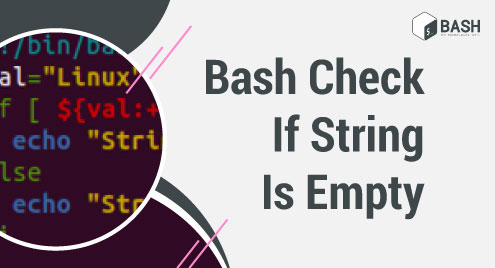










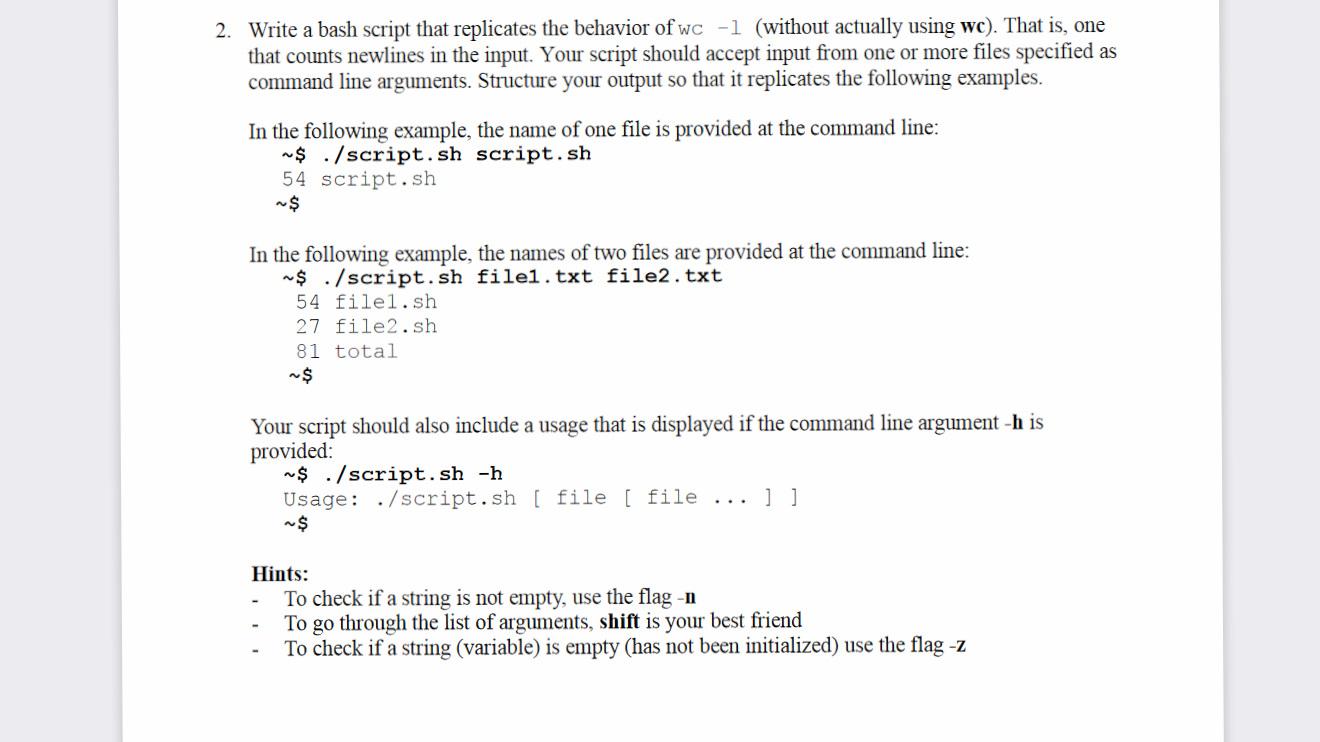


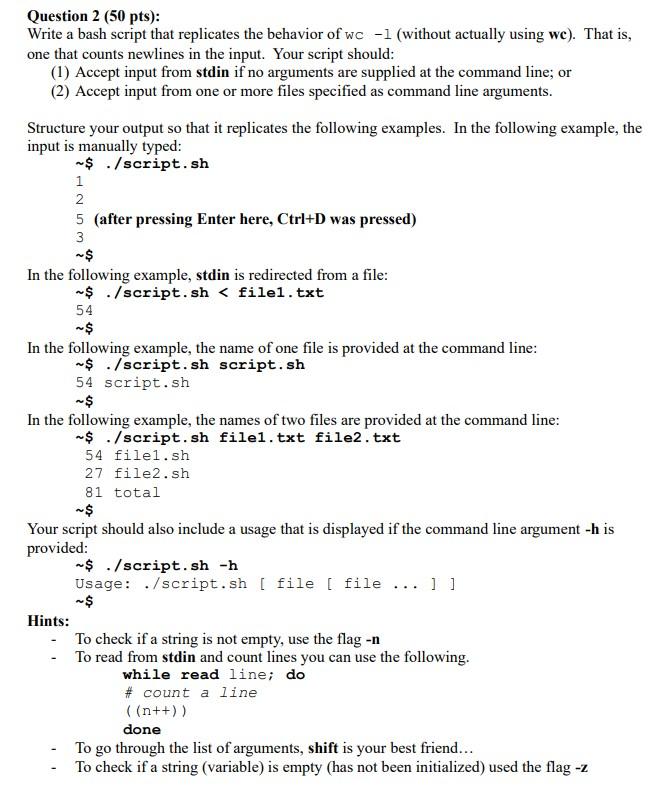
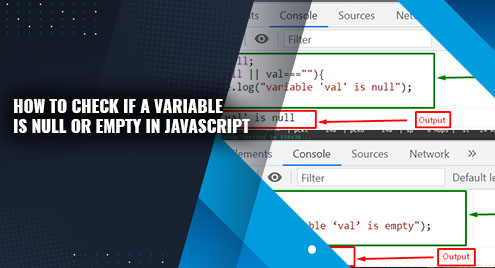





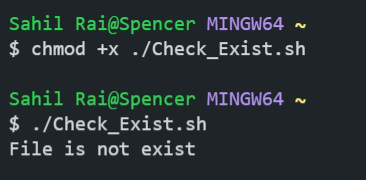







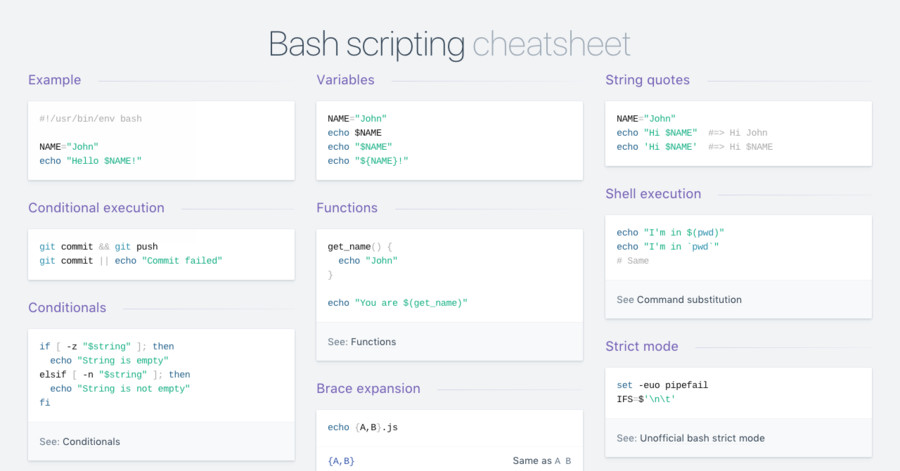
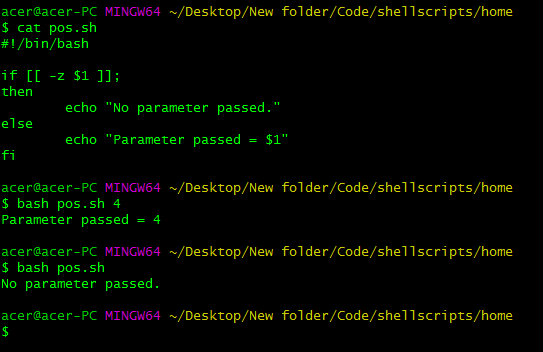
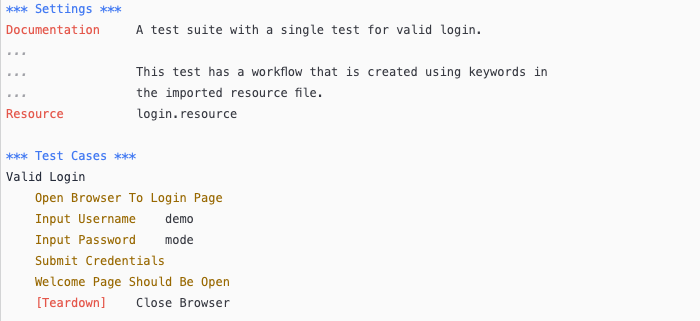




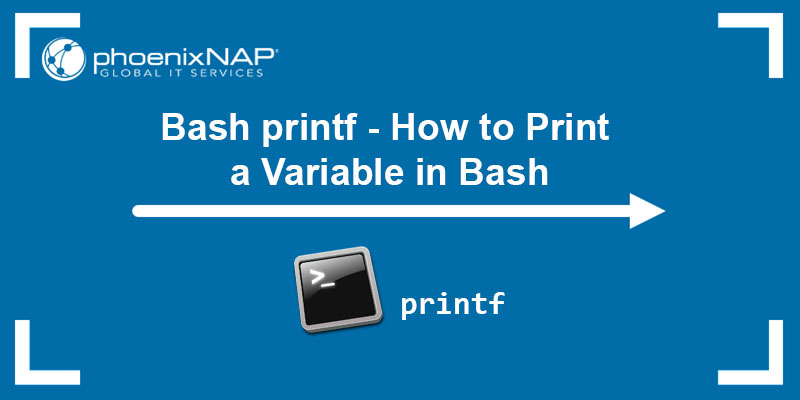
![How to check if struct is empty in GO? [SOLVED] | GoLinuxCloud How To Check If Struct Is Empty In Go? [Solved] | Golinuxcloud](https://www.golinuxcloud.com/wp-content/uploads/golang-check-if-struct-empty.jpg)
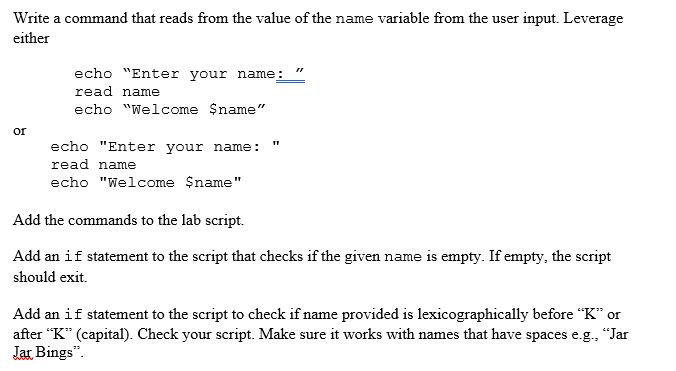

Article link: bash check if var is empty.
Learn more about the topic bash check if var is empty.
- How To Bash Shell Find Out If a Variable Is Empty Or Not
- How to determine if a bash variable is empty? – Server Fault
- Check If Variable Is Empty in Bash [4 Ways] – Java2Blog
- Determine Whether a Shell Variable Is Empty – Baeldung
- Bash Check If String Is Empty – Linux Hint
- How To Bash Shell Find Out If a Variable Is Empty Or Not
- empty – Manual – PHP
- How to find whether or not a variable is empty in Bash
- Check if Variable Is Empty in Bash | Delft Stack
- Check if Variable is Empty in Bash – Linux Handbook
- Bash: How to Check if String Not Empty in Linux | DiskInternals
- Bash Check if Variable is Empty – Stack Diary
See more: https://nhanvietluanvan.com/luat-hoc